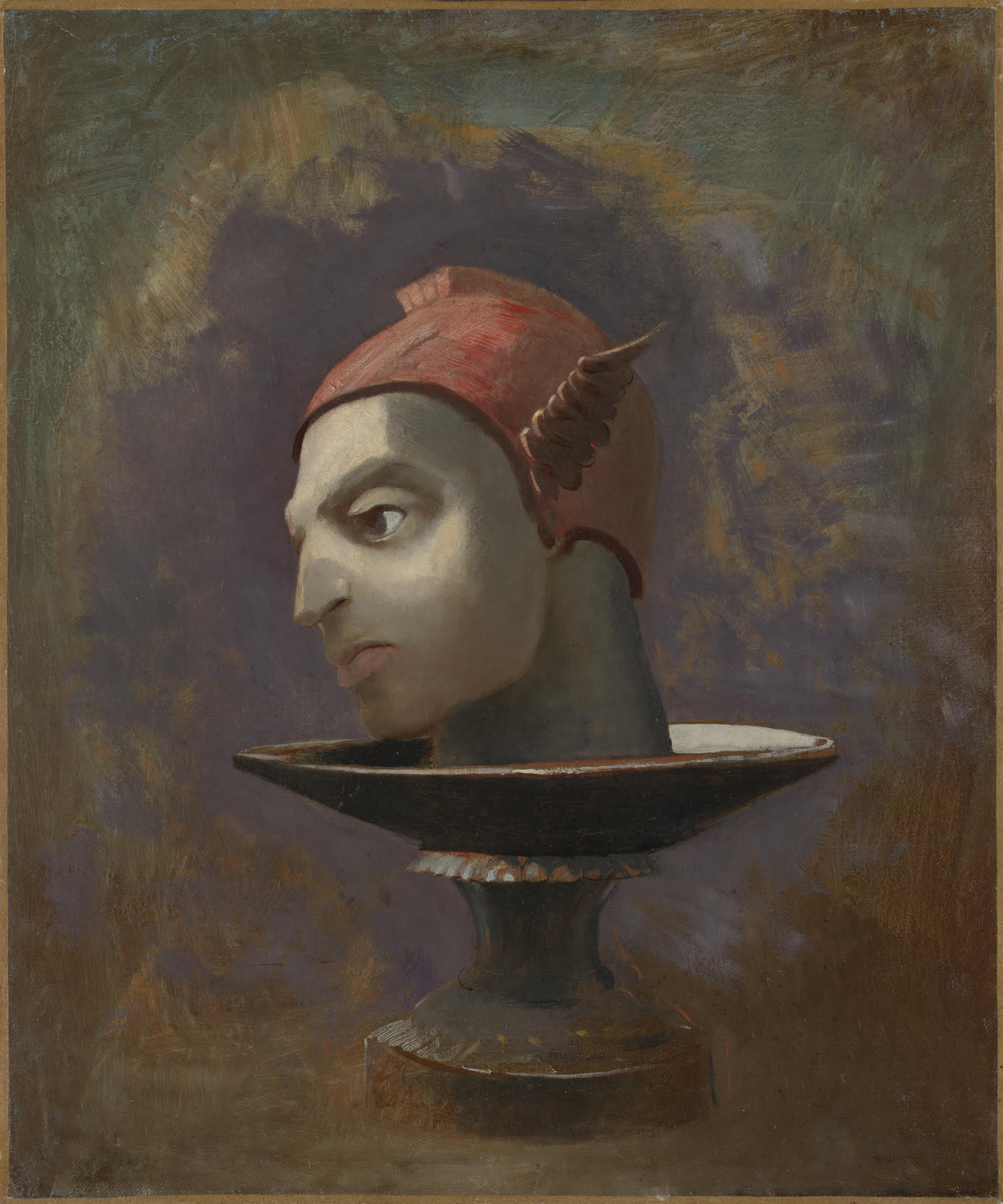We present today's work thanks to Kröller-Müller Museum in Otterlo (Netherlands). It is one of the museums I really dream to visit. :)
The disembodied or severed head is a characteristic theme of Odilon Redon. It appears in various forms in his work, for instance as the head of John the Baptist or of Orpheus, but also without a specific identity or meaning. Tête de Persée is one of the earliest works with this motif created by the French artist.
In this painting, the head of Greek demigod Perseus is placed on a sacrificial platter, against a cloud-like, indefinable background. He seems lost in thought, unaware of his surroundings. A clear white light falls on his face and on the edge and back of the platter.
The painting is highly reminiscent of the traditional representations of John the Baptist, who was decapitated at the request of Salomé. But Perseus did not meet such a gruesome fate. He decapitated Medusa, one of the three Gorgons. By combining the two histories from classical mythology and the New Testament, an enigmatic and original depiction is created.
Here are 5 reasons to visit Kröller-Müller Museum.


 Odilon Redon
Odilon Redon